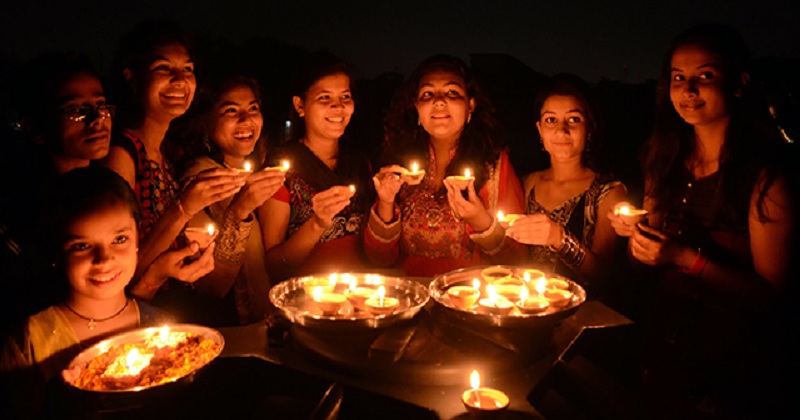
Diwali is the biggest and the brightest of all Hindu festivals. It is the festival of lights: deep means “light” and avali “a row” to become “a row of lights.” Diwali is marked by four days of celebration, which literally illuminates the country with its brilliance and dazzles people with its joy.
The Diwali festival occurs in late October or early November. It falls on the 15th day of the Hindu month of Kartik, so it varies every year. Each of the four days in the festival of Diwali is marked with a different tradition. What remains constant is the celebration of life, its enjoyment, and a sense of goodness.
The Origins of Diwali
Historically, Diwali can be traced back to ancient India. It most likely began as an important harvest festival. However, there are various legends pointing to the origin of Diwali.
Some believe it to be the celebration of the marriage of Lakshmi, the goddess of wealth, with Lord Vishnu. Others use it as a celebration of her birthday, as Lakshmi is said to have been born on the new-moon day of Kartik.
In Bengal, the festival is dedicated to the worship of Mother Kali, the dark goddess of strength. Lord Ganesha—the elephant-headed god and symbol of auspiciousness and wisdom—is also worshiped in most Hindu homes on this day. In Jainism, Deepawali has the added significance of marking the great event of Lord Mahavira attaining the eternal bliss of nirvana.
Diwali also commemorates the return of Lord Rama (along with Ma Sita and Lakshman) from his 14-year-long exile and vanquishing the demon-king Ravana. In joyous celebration of the return of their king, the people of Ayodhya, the capital of Rama, illuminated the kingdom with earthen diyas (oil lamps) and set off firecrackers.
The Four Days of Diwali
Each day of Diwali has its own tale to tell. The first day of the festival, Naraka Chaturdasi marks the vanquishing of the demon Naraka by Lord Krishna and his wife Satyabhama.
Amavasya, the second day of Deepawali, marks the worship of Lakshmi when she is in her most benevolent mood, fulfilling the wishes of her devotees. Amavasya also tells the story of Lord Vishnu, who, in his dwarf incarnation, vanquished the tyrant Bali and banished him to hell. Bali is allowed to return to earth once a year to light millions of lamps and dispel darkness and ignorance while spreading the radiance of love and wisdom.
It is on the third day of Deepawali, Kartika Shudda Padyami, that Bali steps out of hell and rules the earth according to the boon given by Lord Vishnu. The fourth day is referred to as Yama Dvitiya (also called Bhai Dooj), and on this day sisters invite their brothers to their homes.
Dhanteras: The Tradition of Gambling
Some people refer to Diwali as a five-day festival because they include the festival of Dhanteras (dhan meaning “wealth” and teras meaning “13th”). This celebration of wealth and prosperity occurs two days before the festival of lights.
The tradition of gambling on Diwali also has a legend behind it. It is believed that on this day, Goddess Parvati played dice with her husband Lord Shiva. She decreed that whosoever gambled on Diwali night would prosper throughout the ensuing year.
The Significance of Lights and Firecrackers
All of the simple rituals of Diwali have a significance and a story behind them. Homes are illuminated with lights, and firecrackers fill the skies as an expression of respect to the heavens for the attainment of health, wealth, knowledge, peace, and prosperity.
According to one belief, the sound of firecrackers indicates the joy of the people living on earth, making the gods aware of their plentiful state. Still another possible reason has a more scientific basis: the fumes produced by the firecrackers kill or repel many insects, including mosquitoes, which are plentiful after the rains.

Post Your Comments